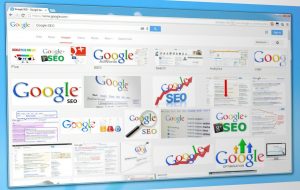Optimising Images on your Website
Many people don’t realise the importance and potential of optimising the images on your website. There are two aspects to image optimisation: website function and speed, and Search Engine Optimisation or SEO.
Each webpage on your site should not be larger than 2MB, it’s important that your website loads quickly otherwise you are at risk of losing readers. To optimise your images for your webpage you need to find the balance between the smallest file size and the best quality you can achieve. This balance is achieved by considering the file format and what type of compression you use.
We find the best option for compressing images is to install a plugin to do this automatically for you – we like https://en-gb.wordpress.org/plugins/wp-smushit/ – this plugin will compress any images you upload without reducing the quality, you can set width and height of all your images so that they all get resized to identical proportions.
Tools to help you with website optimisation
We often use this handy link to check the loading speed of your website – Test My Site https://www.thinkwithgoogle.com/intl/en-gb/feature/testmysite/. You can then use the report feature to see how to improve the loading speed of each page.
 Image Types
Image Types
It helps to understand the three main image types and their attributes:
• PNG – they have a limited colour palette so while they will give you a smaller image size they are not a good option for complex images
• JPEG –most popular file type & are perfect for complex images with lots of colours, shadows or complex patterns as they have a huge colour palette.
• GIF – only uses 256 colors. It’s the best choice for animated images.
Optimising image for SEO
The other important aspect of optimising your image is making it effective as part of the SEO on your website. Images should be considered when working on your SEO strategy as well as your text content, especially if your content is image heavy.
Images are an essential part of any website or blog article, they help your readers understand your article and will help them decide whether to continue to read.
• Relevant image – do make sure you choose a relevant image for the subject matter, it will detract from your content if the image is not chosen carefully, sometime a bit of lateral thinking can help you find just the right image but perhaps not the most obvious, something that will catch the eye and add to your content.
• Original images are best but if you do take images from the internet do make sure they are marked for ‘reuse’ – in this article we explain how to select images on google that are marked for ‘reuse’ or alternatively there are several image libraries where you can source images, we use https://pixabay.com/ to find copyright free images.
• File name – it’s easy to forget to actually give your file a relevant file name so Google knows what the image is without opening it and here is an opportunity to use your ‘keywords’ or ‘key phrases’ – remember the more relevant your keywords within your website the easier people are going to find you.
• Responsive images – make sure your images are responsive, this means they scale up or down as you change the size of your browser. This is something your web developer should do when they build your site as it in involves a small piece of code, so do test your images and talk to your web developer about it.
• Captions – think about giving your image captions, this is text that appears in the grey box below your image and can be added when you upload the file to the site. Captions help readers when they are scanning an article for content, in fact there is evidence that captions under images are read on average more than the body of the content so it is an important way to potentially engage a reader.
• Alt Text – the alt text will appear if for some reason the image is not shown to the reader, they may have turned off images or indeed if the reader has a visual impairment, the alt text may be read out by a dictating tool so you are ensuring that all your website visitors can access your information. Again, use your ‘keywords’ or ‘key phrase’s but make sure it genuinely describes the image so both people and search engines fully understand your content.
• Title Text – some browsers show the ‘title’ text when you hover over images you can use the same text as the Alt Text here although as it is not 100% of browsers that show this function this is not as important as the Alt Text.
See more about optimising your website here: https://www.reddesk.co.uk/optimising-website-improving-seo/
If you are finding some of the above overwhelming then we’d be happy to help lindsay@reddesk.co.uk
